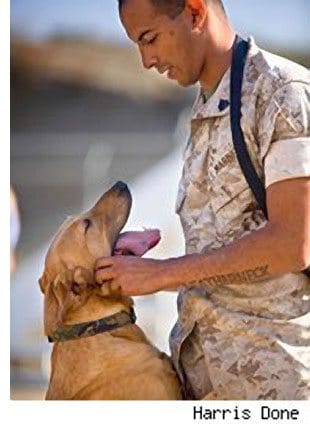 Today, we’d like to tip our hats to an unlikely hero: America’s warrior dogs.
Today, we’d like to tip our hats to an unlikely hero: America’s warrior dogs.
Man’s best friend has been an invaluable soldier-companion for many years. They were vital in the Pacific campaign of WWII, a topic explored by documentary director Harris Done in “War Dogs of the Pacific.” (Done is currently working on a second film about modern war dogs.)
“I was blown away by their mission,” Done says. “They were able to use the dogs’ superior senses to alert them to Japanese ambushes laying in wait in the dense jungles. They can hear your heart beating from 20 feet away, or smell someone approaching from a quarter-mile away.”
The war dogs themselves become vital members of the team: “These dog handlers put their lives in the hands or nose of their dogs. That’s quite a trust. There are incredible stories of Marines whose dogs were killed in combat, and they never recover from it.”
In honor of these fearless canines, we spoke with Sergeant Mike Dowling — a former Military Working Dog Handler with the Marines — about how modern dogs are saving lives in Iraq and Afghanistan, sniffing out IEDs and braving firefights in Fallujah.
The few, the proud …
Dowling grew up with dogs, and his family had trained canines to assist the blind. But when he signed up for the Marines he wasn’t even aware that the armed forces employed specialized war dogs. As a member of the military police, Dowling was up against tough odds. Of 50 students in each MP class, only 2-5 will be certified as canine handlers — yet he says that nearly 50 percent of each class wants the job. “Being a canine trainer is a huge responsibility. The animal itself, after all the training, is worth anywhere from around $20,000 to $50,000.”
Good breeding
Believe it or not, during WWII, a great number of war dogs were domestic animals donated by American families. Things are a bit more controlled in the 21st century. Dowling explains that two breeds have proven themselves the most proficient at war-dog work: German Shepherds and Belgian Malinois. “They learn really quick, they love to work,” he says. “Their instincts, their athleticism, their endurance …” Doberman Pinschers are occasionally used, as well as Labradors — but the latter breed only serves nonviolent detection duty, since “they’re not very aggressive.”

I hope that the generals remember the dogs heroic efforts and don't leave them behind as 'equipment' as they did in Vietnam.
I hope that the generals remember the dogs heroic efforts and don't leave them behind as 'equipment' as they did in Vietnam.